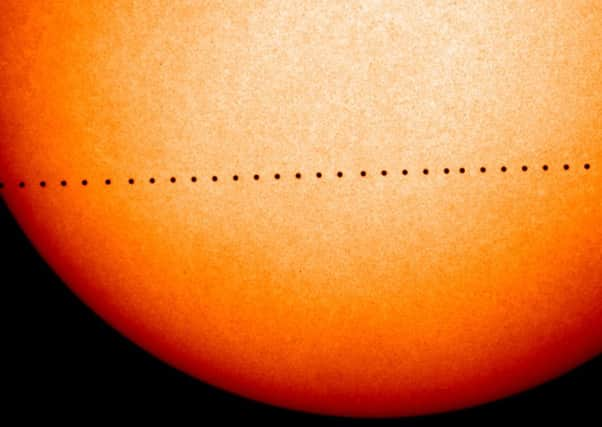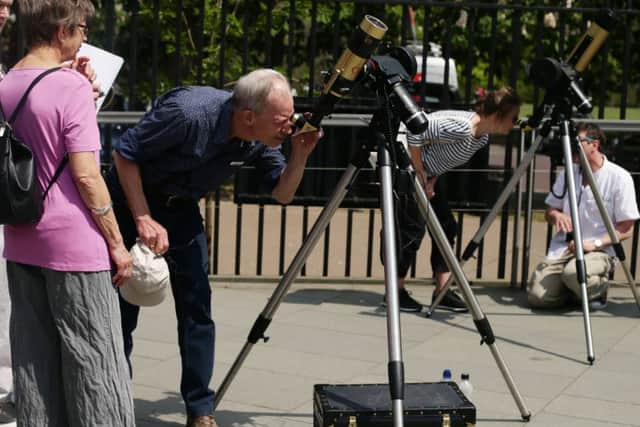Mercury crosses in front of the sun in rare phenomenon
This article contains affiliate links. We may earn a small commission on items purchased through this article, but that does not affect our editorial judgement.


The Transit of Mercury will see what appears to be a tiny black dot moving across the sun during an eight-hour window from midday.
People will be able to watch the event safely at a number of locations around the world, including the Royal Observatory Greenwich. It will also be live-streamed online by the European Space Agency.
Advertisement
Hide AdAdvertisement
Hide AdThose gathered at the Royal Observatory will be able to view the event through the 28in wide Great Equatorial Telescope - the largest lensed telescope in the UK - during two special half-hour viewing sessions.


The telescope has not been turned towards the Sun since 1927 and will be using a new solar filter to make the viewing possible.
Others will be able to take advantage of free telescope viewings next to the Astronomy Centre between midday and 7.45pm.
Public Astronomer Dr Marek Kukula, who noted that it is not ever safe to look directly at the sun, encouraged people to take the opportunity to watch the event at one of the many organised viewings.
He said: “The last one was in 2006. These events don’t happen every day so it’s a lovely chance to see it.


• READ MORE: Old mines offer hope of cheaper heat for homes
“Events like this are important for two reasons - historically they have helped astronomers work out how big the universe was, and now they are used to detect solar systems outside our own and help us understand the scope of the universe.”
Asked what those gazing through the lens might see, Dr Kukula said: “It appears as a tiny black dot moving across the sun. You can’t see it with the naked eye.
“When you are watching this tiny black dot crawling across the face of the sun you are actually looking at something about the size of Africa 100 million kms away moving at a speed of 50km per second. It is quite exciting.”
Advertisement
Hide AdAdvertisement
Hide AdThe viewings will depend on weather conditions, but Dr Kukula said conditions in London are looking good for later.
Those keen to view the events today are being reminded to be safe.
Daniel Hardiman-McCartney, clinical adviser to the College of Optometrists, said: “This is a rare opportunity to see the transit of Mercury across the sun, and people will be very excited to make the most of it.
“You may be tempted to look directly at the sun, but it is very important that you don’t do so, as this will put your eyesight at risk.”
He warned that people should not watch the transit through a telescope - unless at a specially organised event with precautions in place - binoculars, camera or camera phone.
He also said people should not think they are protected by sunglasses, or use eclipse glasses.
DOWNLOAD THE SCOTSMAN APP ON ITUNES OR GOOGLE PLAY